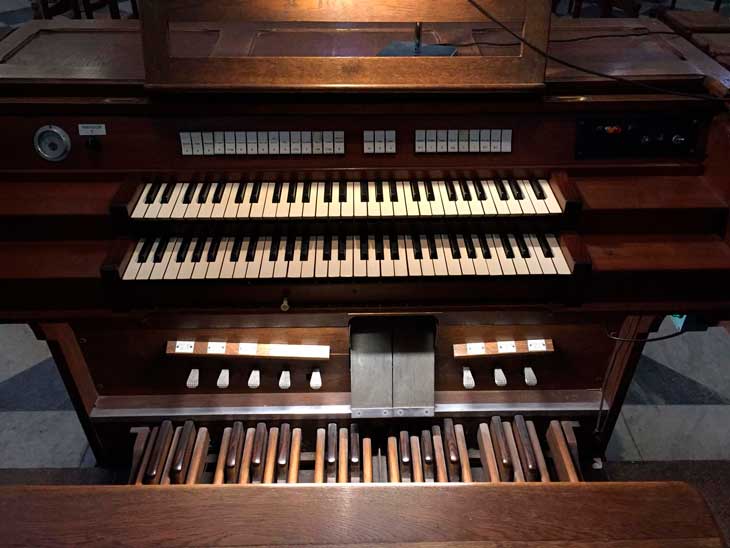As early as 1357 the rood screen of the cathedral supported an organ with a few stops. These “lectern organs” underwent some transformations in 1481 and 1504. This “pulpit organ” disappeared at a date that is still unknown.
In 1857, the Chapter of the Cathedral commissioned a choir organ from Charles Gadault fils.
This organ, with about ten stops and no visible pipes, was installed behind the stalls, in a room located under the statues around the choir, in the second north bay. The console, with a single keyboard, is placed in the second row of choir stalls.
It will be rebuilt from 1951 by the Roethinger company of Strasbourg.
15 real stops are distributed on two expressive keyboards of 56 notes and a pedal of 30 notes. The transmission is electric. The windchests are placed perpendicular to the choir, the basses being placed at the back of the room, which does not favor the propagation of sound. The console is placed in front of the stalls; the bellows and the motor are placed in the chamber of the first north bay.
In 1968, the Danion-Gonzalez firm carried out a revision. The two expressive boxes were removed and replaced by four manually opened shutters for the use of the instrument.
The organbuilder Jean-Marc Cicchero added a three-rank cymbal during the reorganization in 1995.
The composition today is
Grand-Orgue : Montre 8, Flûte harmonique 8, Bourdon 8, Prestant 4, Plein-jeu 4 rangs, Trompette 8.
Récit : Cor de nuit 8, Gambe 8, Voix-céleste 8, Flûte 4, Nasard 2 2/3, Doublette 2, Tierce 1 3/5, Hautbois 8, Cornet 5rgs, Cymbale 3 rgs.
Pédale : Soubasse 16, Flûte 8*, Flûte 4* (* in extension of the Soubasse).
Octave grave II/I, octave aigüe II/I, octave grave GO, octave aigüe GO, Tirasse I et II, accouplement II/I.
